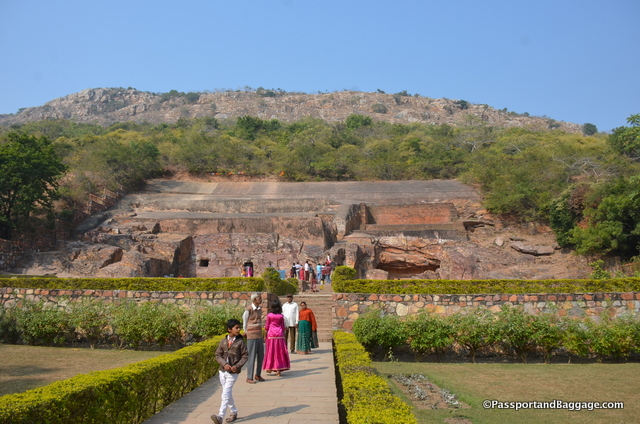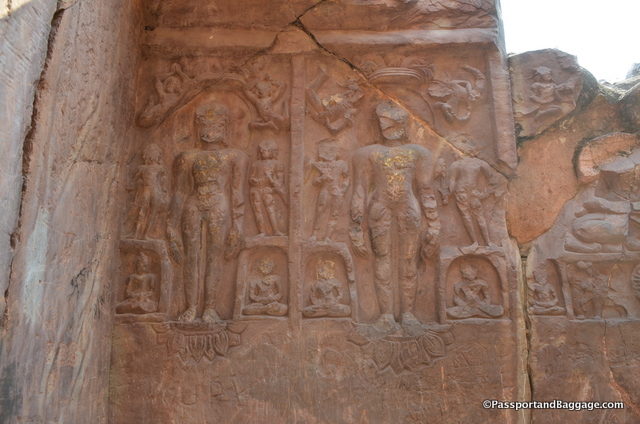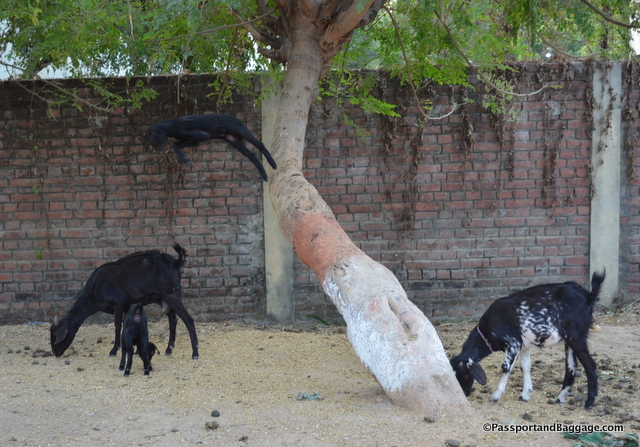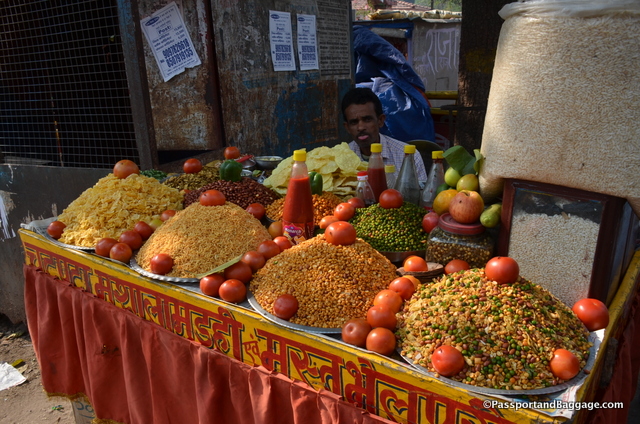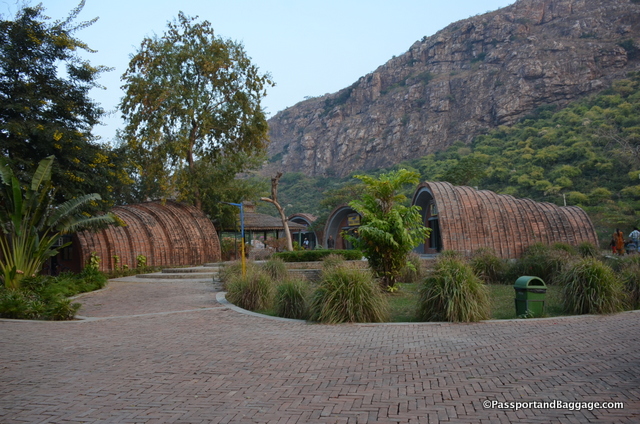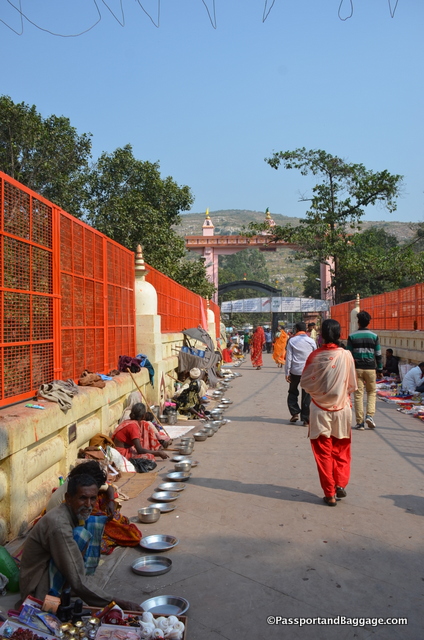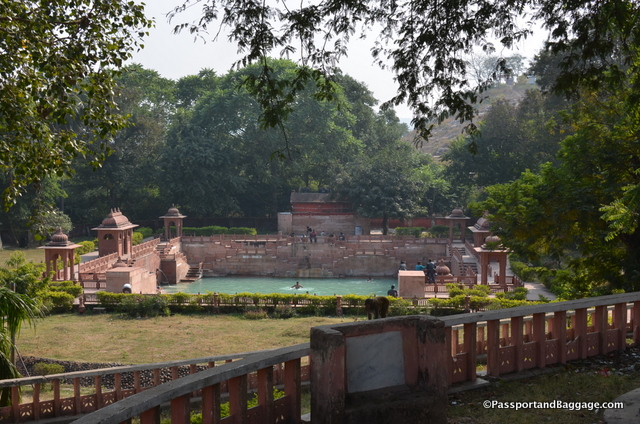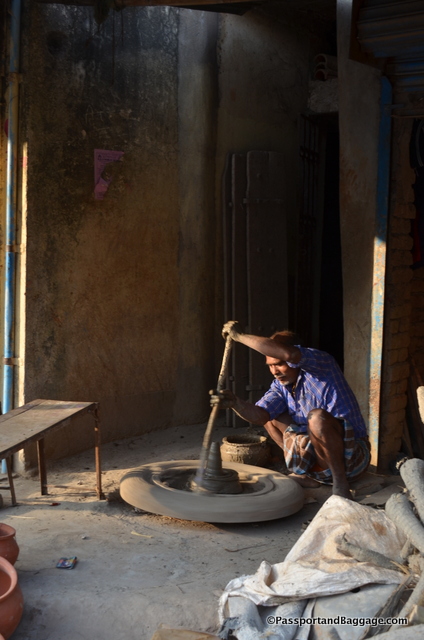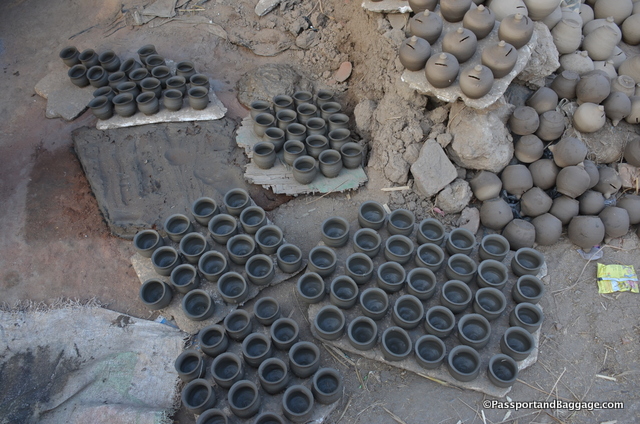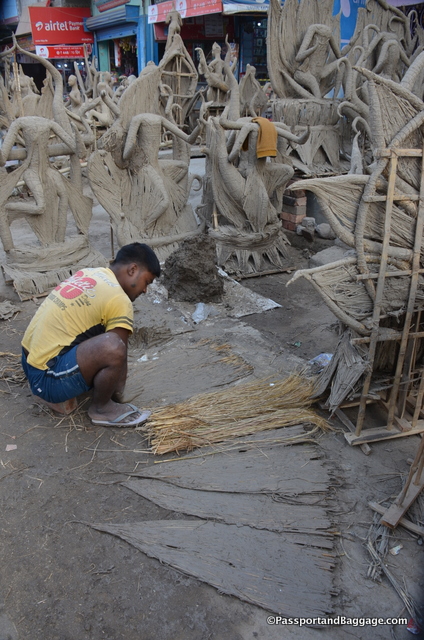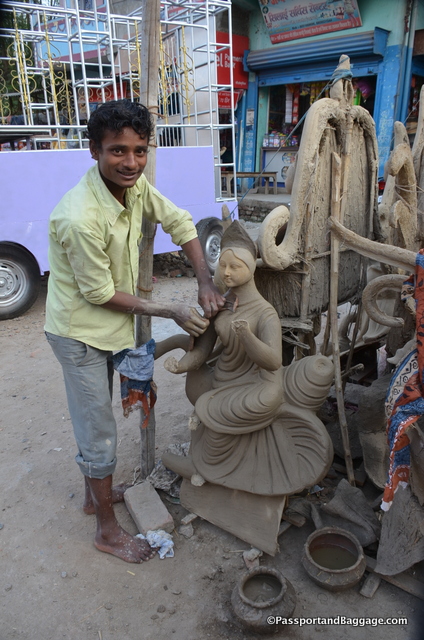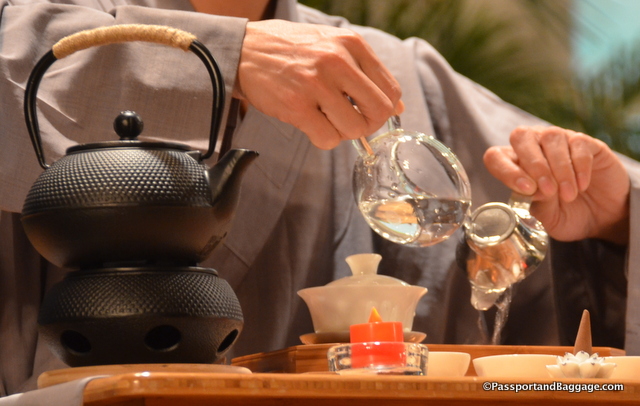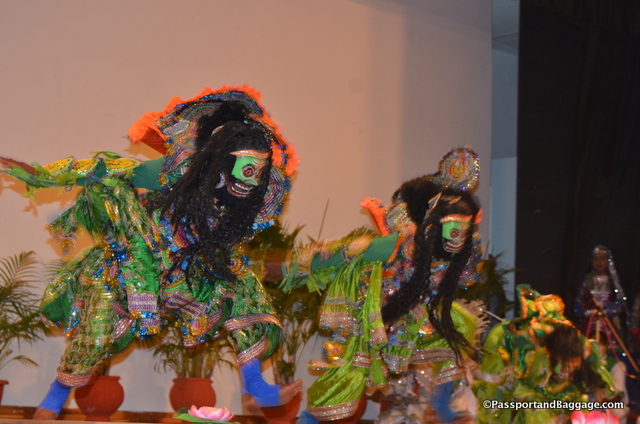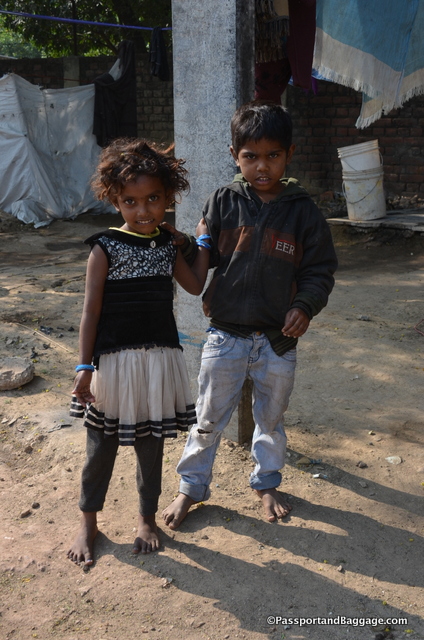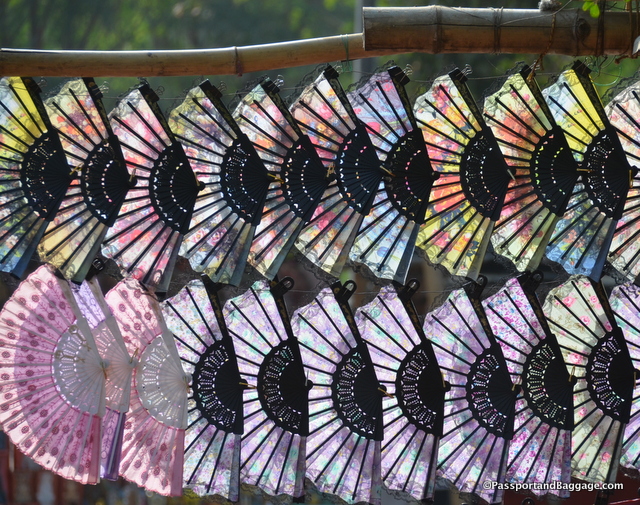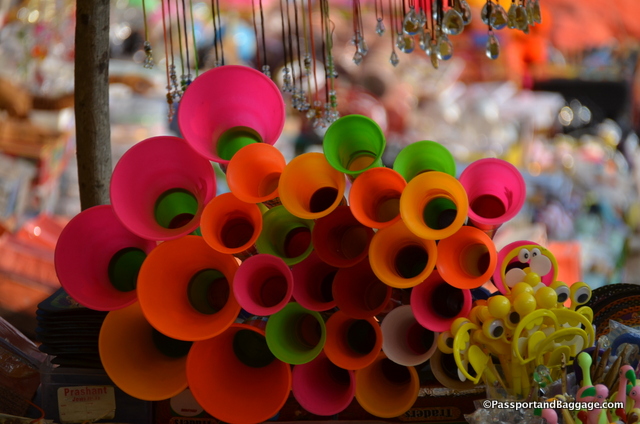December 2017
All of India is an Archaeology site, so picking and choosing what you want to explore can be difficult when there is such a plethora of sites no matter where you are. I chose to visit the Son Bandhar caves, which sit at the end of the Jethian Valley Walk as you enter Rajgir as they promised some interesting carvings.
Son Bhandar Caves are two rock-cut caves located close together at the southern foot of Vaibhar Hill.
Both caves were apparently hollowed into the cliff in the 3rd – 4th century AD – an inscription inside the western cave, between the door and window tells that it was done by the Great Saint of Jains – Muni Vairadevi for Jain ascetics. Both caves were made at approximately the same time.
Son Bhandar means “store of gold” it is said the cave was used as the guard room containing an entry leading to King Bimbisara Treasury. This treasury is still believed to be intact.
The local legend goes like this:
The cave still hides a passage to the gold and the entrance is well hidden in the cave chamber behind an ancient stone wedge. Some also believe that the passage goes through Vaibhargiri mountain and reaches Saptaparni Caves on the other side of range.
 Some believe that this treasure belongs to Jarasandha, others to Bimbisara. The Bimbisara legend goes that when Ajatashatru confined his father Bimbisara, his mother secretly hid some wealth and later donated it to a Tirthankar.
Some believe that this treasure belongs to Jarasandha, others to Bimbisara. The Bimbisara legend goes that when Ajatashatru confined his father Bimbisara, his mother secretly hid some wealth and later donated it to a Tirthankar.
In the wall of the cave, there is an undeciphered inscription in Sankhlipi writing or shell script. It is believed that this inscription is a password – whoever reads it, will open the door and enter the passage. This ornate script has been found in India as well as in Java and Borneo and has never been deciphered.
The front part of the eastern cave has collapsed. The Southern wall of this cave contains important early Jain artwork. These exquisitely sculpted small reliefs are of six Jain Tirthankaras (spiritual leaders).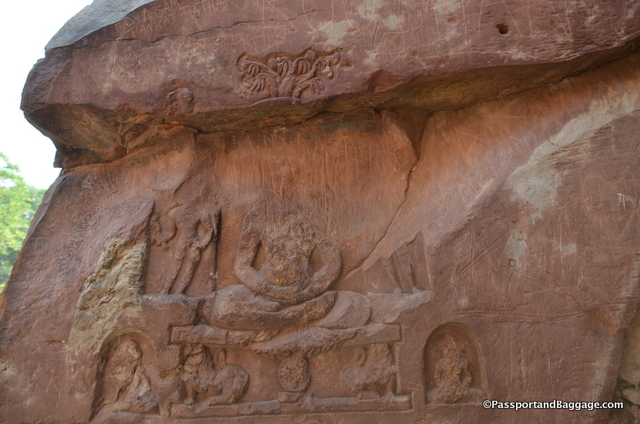
I found no gold, but the site is worth a quick visit none-the-less.
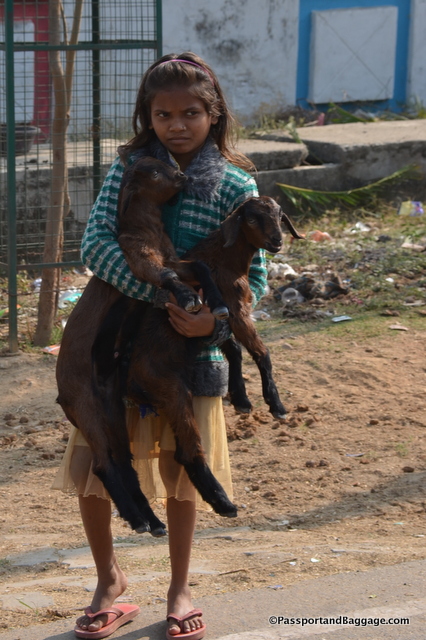 Farm animals running everywhere is such a common sight in these small towns of India, but I am always enamored with them and love photographing them.
Farm animals running everywhere is such a common sight in these small towns of India, but I am always enamored with them and love photographing them.
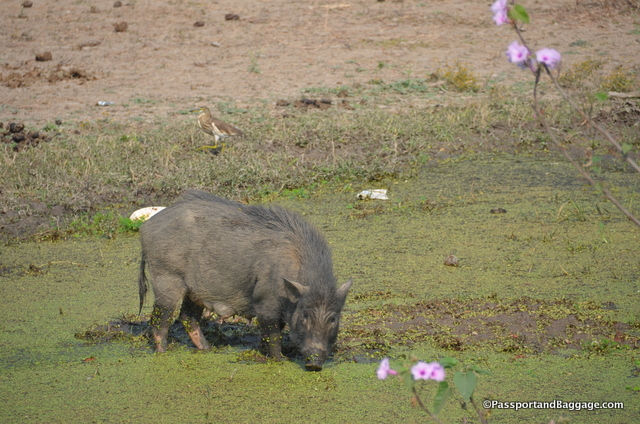 Rajgir is a town of around 42,000 people, and it is obviously tourism that drives its economy. There are vendors lining every street selling street food and colorful trinkets begging to be photographed
Rajgir is a town of around 42,000 people, and it is obviously tourism that drives its economy. There are vendors lining every street selling street food and colorful trinkets begging to be photographed

The main form of transportation in Rajgir is the horse-drawn cart. They are fun to ride and sit high enough to offer a good view of your surroundings
The Maniyar Math (another word for monastery) is, like so many sites in India, walk in and explore, but be prepared to be accosted by locals that want to tell you the history for a price. There is so little to see as most everything has been either stolen or taken to the museums, but, again, all of India is an archaeological site, so catch as catch can.
Many of the statues found dated from the 1st to the 6th century.
Apparently, the place was built by Jains in memory of Naga (snake) Salibadra during the Shaiv Period. It is said his treasure is buried in the well, which lies under the corrugated metal roof. (I am seeing a theme here).

Parts of the Cyclopean Wall that surrounds Rajgir built during the Mauryan (322-185 BCE) rule to fortify the city.
These interesting structures are actually filled with “activities” such as ping pong and pool tables. They are part of the Pandu Pokhar campground/amusement park. Depending on what you want to do you pay between 10 and 300 rupees. I paid the 10 just to walk the grounds, which is all 10 rupees will get you.
Here is what the Pandu Pokhar website says about the site: “Spread out in an area of 22 acres Pandu Pokhar at Rajgir is a truly wonderful and magnificent example of great Indian history that dates back to the Mahabharata. It extracts the story of how King Pandu, the father of the Pandavas attacked Rajgriha and converted the place into a horse stable. It is said that when he left this place, a swale was created and later rainwater accumulated in the swale and that’s how the historical Pandu Pokhar came into being. It’s a heritage that speaks of the glorious history of natural wealth. ”
I am not sure I understand what that has to do with the present site, but there you go. It does have a river and lake running through it, but I had the feeling that was all man-made.
The center of town is dominated by the Lakshmi Narayan Temple. The temple is devoted to Lord Vishnu and the dharma Patni Goddess Lakshmi. It is located within the Saptadhara, a group of ancient hot springs that have been tapped and sent throughout the complex for hot baths.
Interestingly, all information points out that Muslims are prohibited to enter the bath hall. Even traveling with Buddhists you can’t get away from religious hate.
I found the area covered with beggars and hawkers and simply stood outside. I did, however, get the shot of one of the outdoor pools which is very similar to the step wells found throughout Rajasthan.
Wandering the actual town, in contrast to the tourist-centric part of town, I tripped over a few craftspeople.
*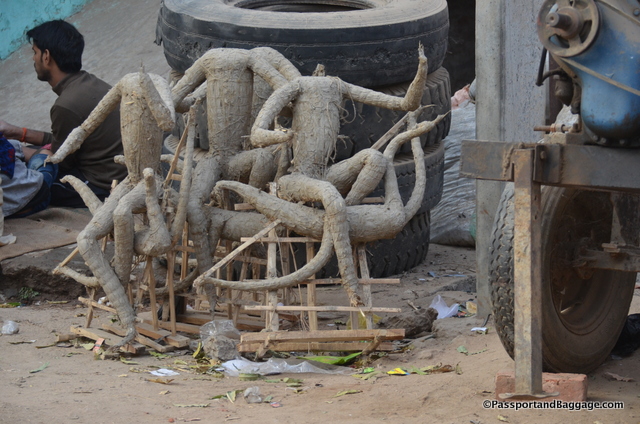 I have always been fascinated with the straw effigies that float down the Ganga. These, however, are for Saraswati Puja which begins on January 22nd this year, so preparation of clay images begins in late December. I wish I had been able to see the next step of dressing and ornamenting these figures.
I have always been fascinated with the straw effigies that float down the Ganga. These, however, are for Saraswati Puja which begins on January 22nd this year, so preparation of clay images begins in late December. I wish I had been able to see the next step of dressing and ornamenting these figures.
Saraswati is either accompanied by or seated on a swan, and is dressed in white for purity. Saraswati is also a prominent figure in Buddhist iconography – the consort of Manjushri. Her early history is as a river goddess.
Saraswati is the goddess of knowledge and arts, so most of these statues are made for school children. They take them to their classrooms for several celebrations and then take them to the river in a small ceremony so they can dissolve similar to the straw effigies placed in the Ganges.
Our evenings ended in cultural shows, one is The Chan Tea Musical, which is touring the world. The musical is about the meditation of the tea ceremony in China.
Our second entertainment was a dance troupe from Rajasthan.
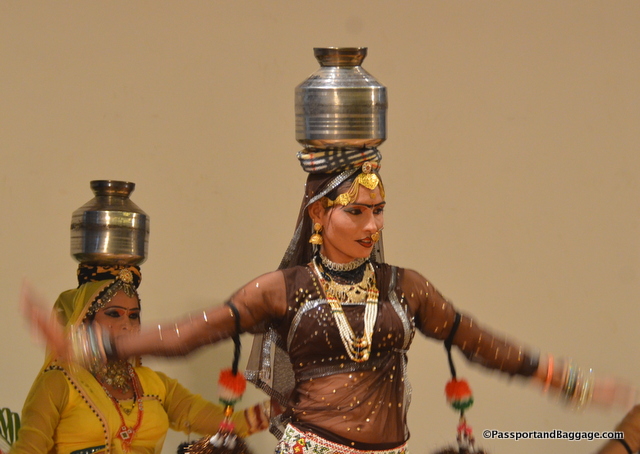
These dances are normally just spontaneous and occur around campfires and there is usually water in the urns.
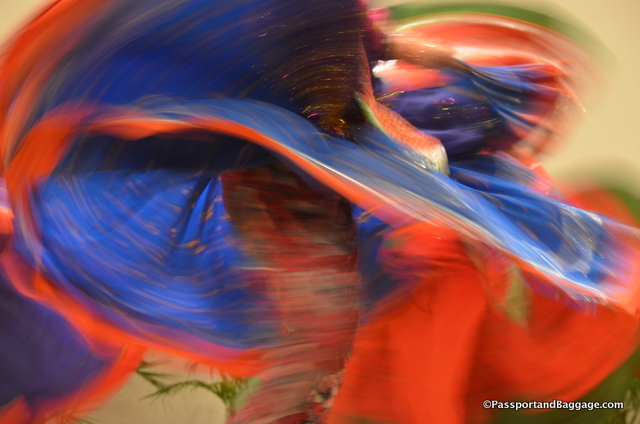
The dancers moved so fast it was almost impossible to catch their moves – I loved the swirling skirts.
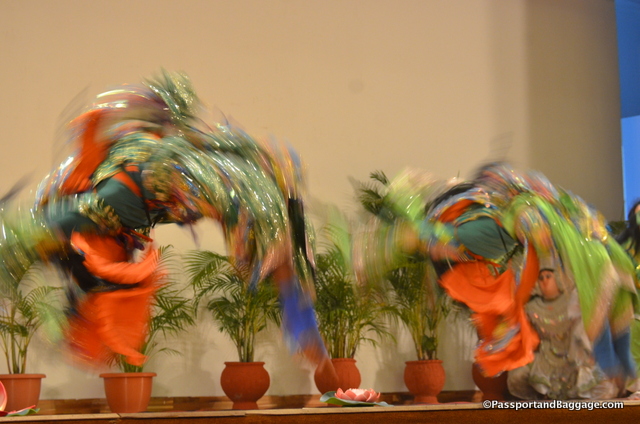
The male characters told a story of the defeat of a wrathful god, they did gymnastics in their, obviously, heavy costumes, and even then they were a blur
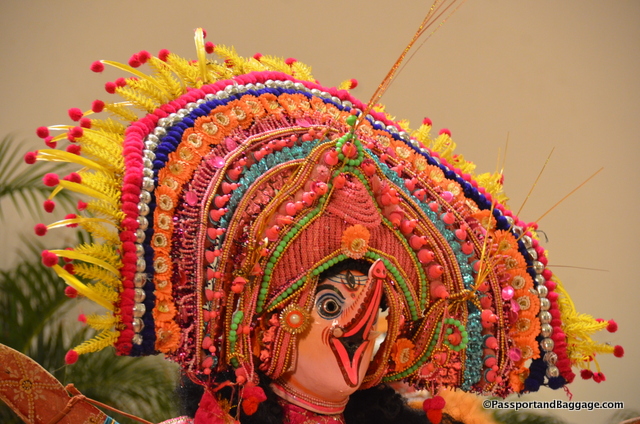 I do not know which of these was supposed to be the wrathful god, but the white one came out sitting on a dancer completely dressed as a peacock, so I think it was he.
I do not know which of these was supposed to be the wrathful god, but the white one came out sitting on a dancer completely dressed as a peacock, so I think it was he.
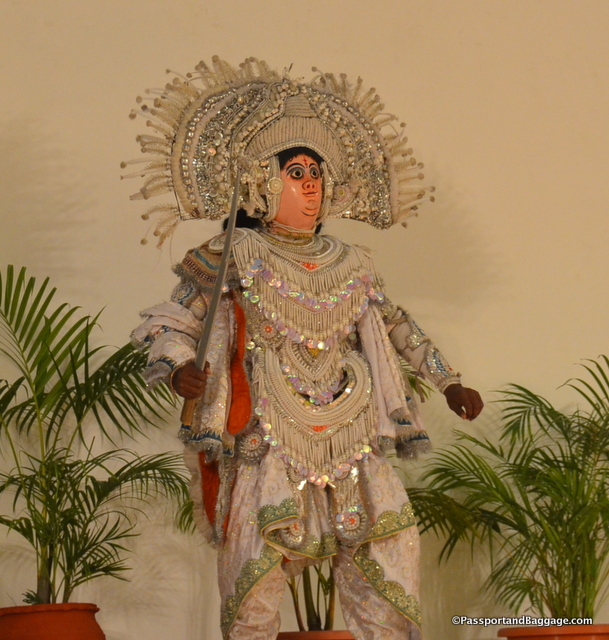
Rajgir has been a whirlwind and I did not get to see nearly half of what I wanted to see, it truly is an archaeological treasury worth more time to explore.
